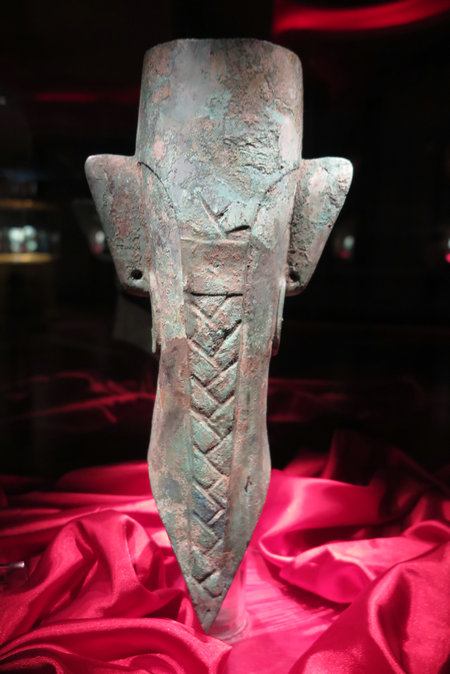 |
|
The back side of the man with a gold mask. [Photo provided to China Daily] |
Fearing that fellow villagers might learn about his discovery, Yan immediately covered the hole with the stone and mud and returned home.
Later that night, Yan and his family reopened the hole and removed more than 400 jade objects. Yan later sold some of the objects in Chengdu, arousing the attention of cultural relics dealers who flocked to Guanghan.
"The popularity of Guanghan jade in turn attracted the attention of archaeologists," says Chen.
Then, in 1933, an archaeological team headed by David Crockett Graham, the American curator of the museum at Huaxi University in Chengdu headed for Sanxingdui to undertake the first formal excavation of the ruins.
Since then, several generations of archaeologists have worked in the Sanxingdui Ruins which cover 12 square kilometers.